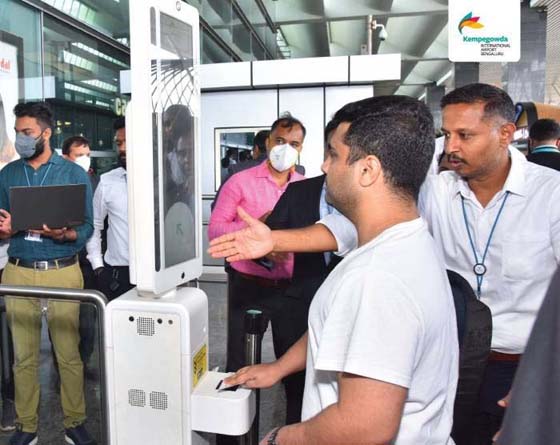
By Anand Parthasarathy
India is moving towards aligning her major airport operations with the best-in-class travel norms followed by the world’s most popular and efficient airports.
Nudged by a spate of negative publicity and social media outrage in recent weeks triggered by fog-induced flight disruptions and consequent passenger angst, the Civil Aviation Minister Jyotiraditya Scindia, chaired an advisory committee meeting with key airport stakeholders last week.
It turned into a brainstorming session with airport operators, immigration officials and security personnel, which identified key challenges and homed in on some technology-driven solutions, to improve the efficiency and passenger comfort of Indian airports – starting with key international gateways like Mumbai, Delhi and Bengaluru.
Some solutions were no brainers – like cross-utilizing domestic and international section X-Ray baggage inspection machines to ensure greater availability and lesser wait time.
Increasing the manpower of security and immigration officials was seen as another necessary and doable fix.
But there was consensus that changes in airport interior design, as well as new technologies to expedite and improve immigration and security check process for international travellers were key prerequisites for heightened passenger comfort.
Some of the airport interior goals were being achieved: the new Terminal 2 of the Bengaluru International Airport Ltd ( BIAL)was conceived as a ’terminal in a garden’ housing 7700 plants -- many rare and endangered -- transplanted after they were dislodged due to roadworks. They are watered by an app-based intelligent irrigation system where water is auto-fed from the top layer, which flows down (after getting absorbed) layer by layer
In recent weeks BIAL T2 secured recognition as one of the 'World’s Most Beautiful Airports' and was awarded the coveted 'World Special Prize for an Interior -- the UNESCO’s 2023 Prix Versailles -- the only Indian airport to receive this recognition. It highlighted the airport's commitment to exceptional design and architecture on a global scale and positioned BLR Airport amongst the top airports globally.
However, the make or break factor for an airport to be deemed passenger friendly is traveller experience, especially at the international arrival and departure facilities.
And globally, there are airports that by popular user acclaim are good or bad: New York Kennedy and London Heathrow have become notorious for very long delays at the immigration counters upon arrival. Singapore and Dubai on the other hand get a thumbs-up from passengers for the ease and comfort of these same counters. The meeting last week decided to study the passenger handling processes of the latter and try to replicate them.
This involves two technologies: e-gates at immigration and biometric-based passenger identification and processing.
A start has already been made with regard to biometrics: Since August 2022, an increasing number of Indian airports have implemented DigiYatra. Passengers download the app, experience a seamless check-in, pass through security, and board their respective flights using their single token face biometric for validating their identity and their boarding pass. This will now be extended to international travellers.
Visitors who enrol using iris, facial, and fingerprint biometrics will be offered automated clearance options during departure.
This is also possible with e-passports – which have a chip embedded in the cover. The chip holds the same information that is printed on the passport's data page: the holder's name, date of birth, and other biographic information. An e-Passport also contains a biometric identifier. India has decided to move to e-passports, but the change is yet to happen.
As for e-gates or smart gates at immigration, Dubai international airport has been a pioneer: Guests arriving and departing at DXB Terminal 3 can go through passport control in a matter of seconds using the enhanced Smart Gates, featuring a new contactless process. If you're registered for the Smart Gates, you can pass through by simply looking at the green light, with no need to scan any document.
Currently three groups of people can use smart gates at DXB airport; United Arab Emirates nationals and GCC nationals, UAE residents and international visa-on-arrival guests with biometric passports. Gulf Cooperation Council includes Saudi Arabia, Kuwait, United Arab Emirates, Qatar, Bahrain and Oman.
By implementing the best-of-breed among these tech solutions, India hopes to make the international and domestic traveller experience in her airports much better – a first step to realise the stated ambition to transform Mumbai and Delhi, for starters, into global aviation hubs.